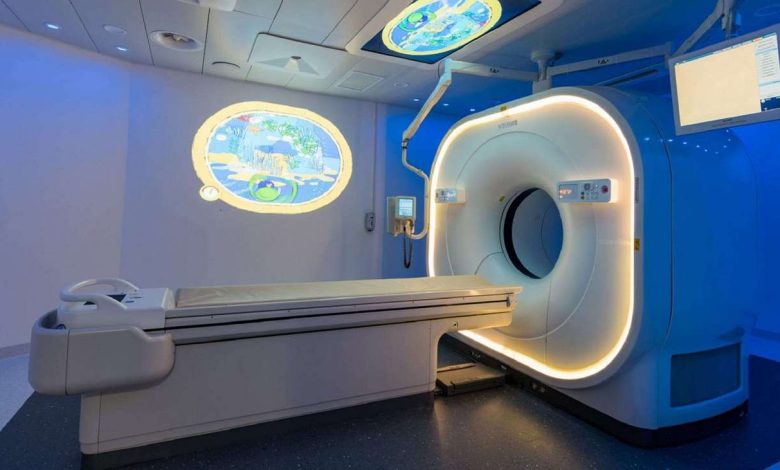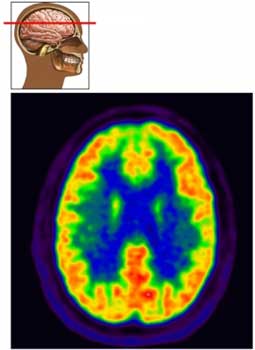PET / Computed Tomography: what is this study, causes, Contraindications, how they do it, what after

Description PET / CT scan
PET / CT is one of the medical imaging techniques, which combines positron emission tomography (PET) and computed tomography (CT). Combined PET/CT examination can be performed on any part of the body. It is often used to gather information about the heart, brain and lung.
When PET is used weakly radioactive substance, are injected into the body to measure the activity of body cells. CT uses X-rays, creating images, which analyzes computer, that allows you to create three-dimensional image of the body under study. When both tests are performed at the same time, Information about the structure and function of the organ under investigation together with the help of computer models.

Causes of the PET / CT scan
Since the combination of PET / CT provides a combination of information on the functions and structure of the body, research is very useful for the early diagnosis of cancer. Can be analyzed not only the presence of abnormal cells, but their functioning. This can help distinguish benign (noncancerous) and malignant neoplasms (cancer). PET / CT is also used in re-examination of previously diagnosed cancer.
Each of these tests has limitations. But combined, they provide very precise information about the place and the development of cancer. In the past, When these tests had to be done separately, interpretation of results was more difficult due to changes in the patient's body position. But, with the advent of scanners, that combine both technologies is no longer a problem. Many experts believe, that the diagnosis of cancer with the help of this technology will allow doctors to reduce the number of invasive procedures, which must pass patients (eg, biopsy) and can provide very precise data.
Also, with PET / CT can be detected and examined brain and heart disorders.
Possible complications of PET / CT
Some possible complications with this test include:
- Allergic reaction to the chemicals used;
- Renal.
How is PET / CT?
Preparation for the procedure
- Prepare a list of medicines, that you take. It is necessary to bring this list to the test;
- If you have diabetes, Ask the doctor, how to take diabetes medication and / or insulin before test. Abnormal blood glucose levels can affect the results of the analysis;
- Tell your doctor, if you have kidney disease. Doctor, perhaps, It needs to take action, to avoid kidney injury during the test;
- If you specify a doctor:
- Eat foods high in protein, low carbohydrate within a day or so prior to the PET / CT;
- Before the survey drink 3-4 cup water;
- Not recommended is for 6-8 hours before the test;
- Tell staff, performs the test as follows:
- Previously, there was a negative reaction to a contrast agent or iodine;
- You are sick asthma;
- There is a fear of small, enclosed spaces (claustrophobia).
Description PET / CT examinations
- If you have claustrophobia, It may be given a mild sedative, to help relax;
- In his hand is introduced intravenous catheter;
- After the catheter is introduced a small amount of substance, used during PET;
- After the injection, you should wait about 45-60 minutes;
- You will be placed in the supine position on a special table;
- We introduce a contrast agent (for computed tomography);
- The table will move slowly in the machine, is shaped like a donut. You will need to lie still for 35 minutes, is to take pictures of the PET / CT.
After the PET/CT scan
- You should drink plenty of water throughout the day after scan. It helps cleanse the body of a radiopaque and radioactive substances;
- If the procedure used sedative, necessary to provide a ride home;
- Most often you will be able to resume normal activities the day of the test.
How long will the PET / CT scan?
PET / CT scan takes a total of two o'clock. The injection is carried out around 45 minutes prior to scanning. Needless to scan takes about 35 minutes.
Whether it hurts when holding the PET/CT scan?
Slight pain will be felt with the introduction of the catheter, then there should be no other pain. It may feel a burning sensation, when injected contrast agent.
Results PET / CT scan
Based on the results of the doctor determines, Do I need further tests or treatment.
Communication with the doctor after the PET / CT scan
We need to see a doctor, If the following symptoms:
- Signs of an allergic reaction, including hot flushes, rash and itching;
- Swollen or itchy eyes;
- Shortness of breath or tightness in the throat;
- Nausea;
- Less than normal amount of urine.
